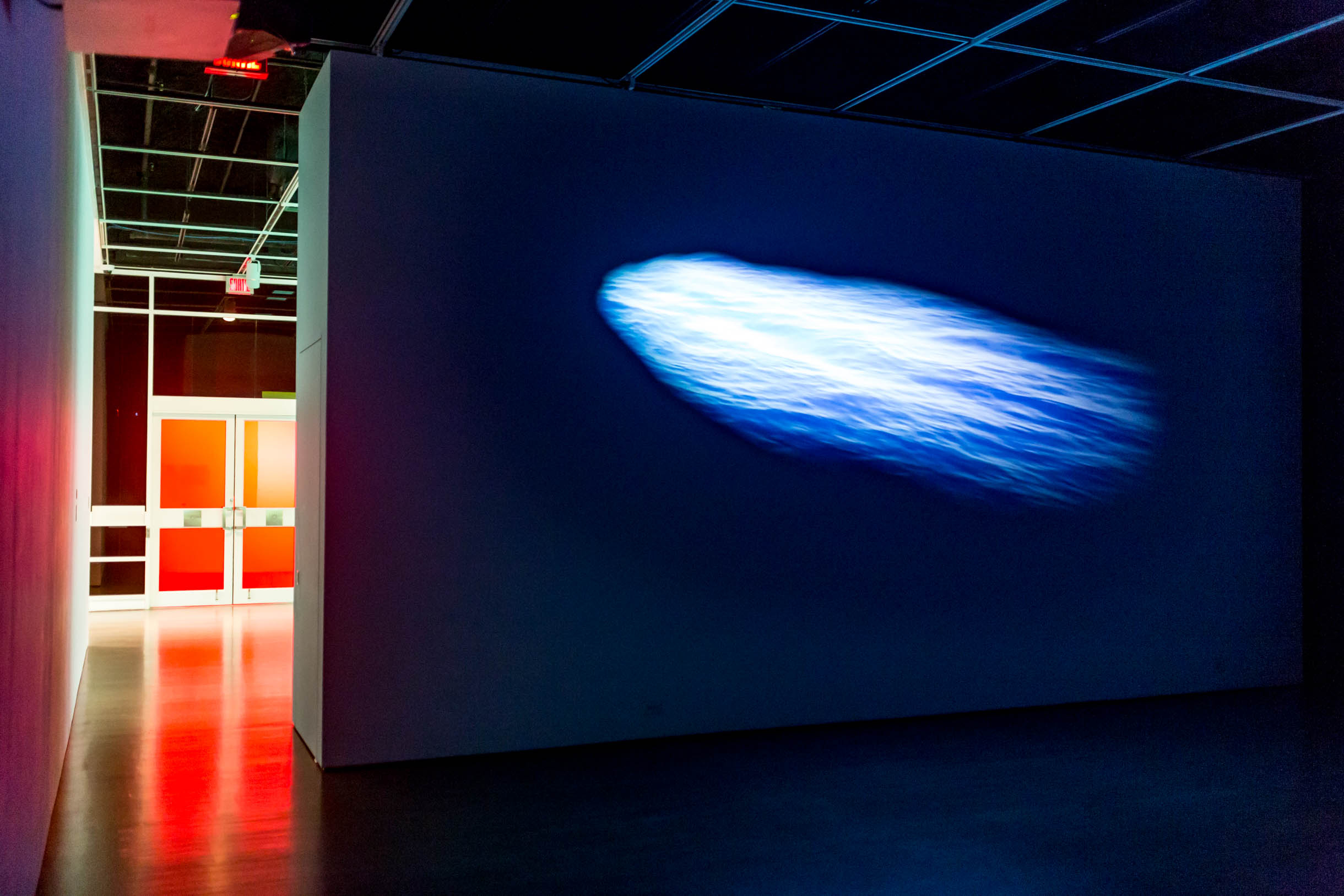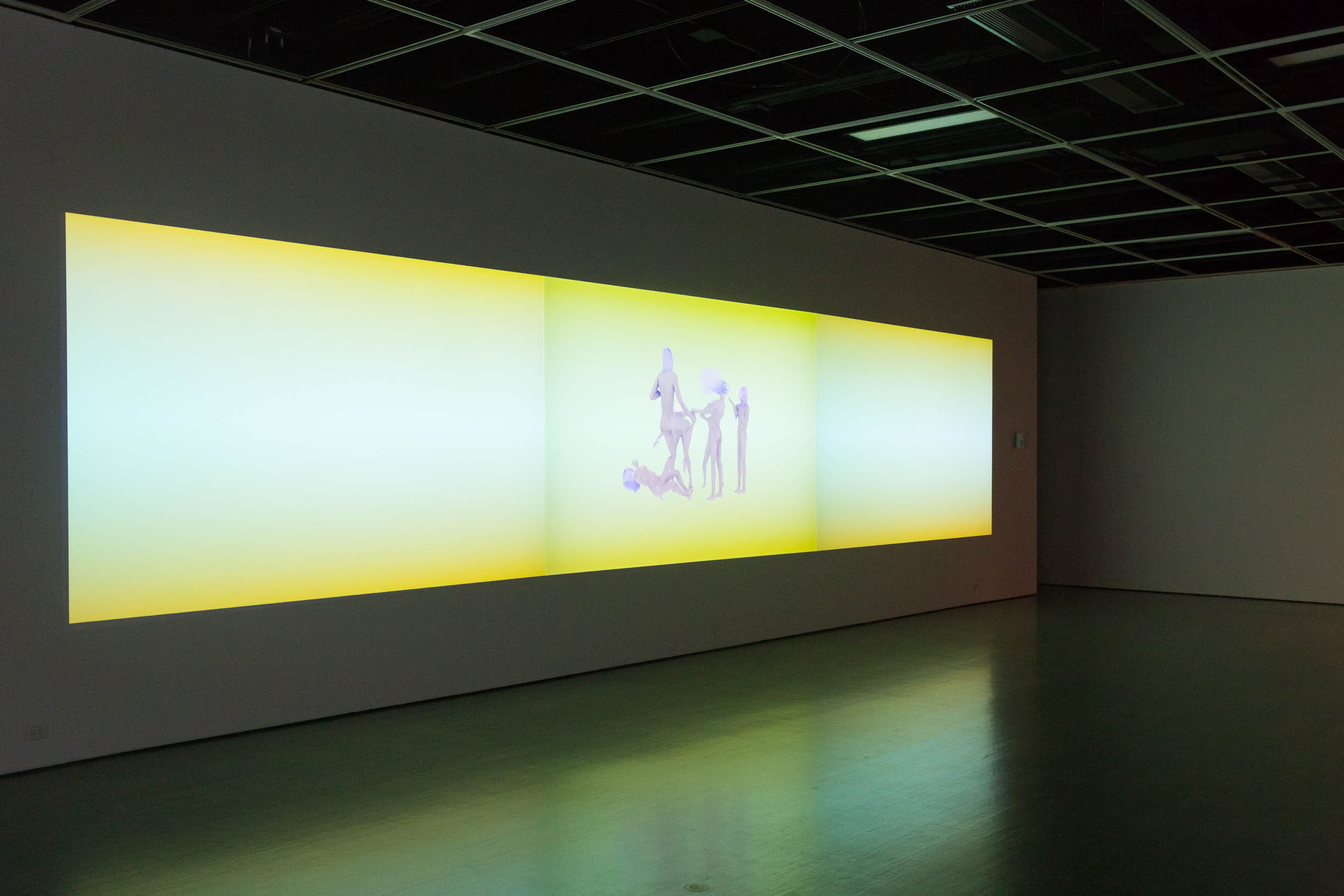Concordia alumnus uses organic forms and human shapes in new digital art display
When viewing a piece of art in a gallery space, the audience is immediately confronted with the need to interact and respond to it. This interaction occurs quite naturally and encourages the viewer to seek their ownconclusions and meanings about the piece.
“You are just in front of something, immersed in something,” said Michèle Thériault, the director of the Leonard and Bina Ellen Art Gallery and the curator of its current exhibition, CARNATIONS. She contrasted the gallery experience with that of watching a movie, which takes the viewer on a narrative journey. In a gallery space, on the other hand, the viewer is more removed from the artwork itself and is left to make sense of it on their own.
“Here, there is always that distance […] you are aware it’s an artwork, and there’s that strangeness because it doesn’t have that narrative of a film with a beginning and an end. So, it leaves it suspended […] it makes you reflect on what’s happening, what you feel or what you can’t pinpoint.”
CARNATIONS, which will be on display until Oct. 21, features the work of Concordia alumnus Philippe Hamelin. Hamelin, who holds an MFA in fine arts, creates intriguing and bizarre digital art pieces that place human and natural forms in a new context.
“The forms are kind of organic-like and suggest life,” Thériault said. “It creates this kind of emotion in you or sentiment or feeling. Something that is familiar, but at the same time, is really strange.”
As the viewer enters the gallery, they are immediately greeted by perhaps the most striking piece of the entire exhibition, Les Amis (à l’infiniti). It is projected onto the largest section of wall—its neon colours jumping out from the gallery’s darkened enclosure. A repetitive beat plays over the projection, echoing a classic dance rhythm but could also be described as an upbeat pulse. The looped animation depicts a group of people moving in a way that could best be described as a form of “dance.” They twitch, sway and convulse in ways that are unnatural for a human body, yet the bodies are unquestionably human.
Other pieces that evoke a similar feeling of strange surreality are those that make up the series called Vivariums. They are displayed in a small room off of the main space, demanding their own attention. The series consists of four pieces, each displayed on small screens about the size of a computer. One, Thériault explained, is reminiscent of the birthing process. A small white shape stretches and shifts, as if containing something living. The animation is about 45 minutes long, showing the shape as it gradually “gives birth” to a worm-like creature.
A second 45-minute animation loop mimics an animal moulting, a process during which they shed dead skin to reveal a new layer underneath. A white object resembling a large snail shell slowly gives way to show a smaller, shimmering seed-like shape sitting inside. The slow progression of this evolution requires the viewer to observe its phases with prolonged attention. Since most audience members don’t watch one piece for too long, they only end up glimpsing a section of this process. This is an example of the level of audience-to-piece interaction that is necessary to fully understand Hamelin’s work.

A third room within the gallery hosts two pieces that, together, are titled Scène 2 (découpage). A gentle loop of classical music plays over the speaker system, setting a tranquil and relaxed mood. On one wall, an animation of what appears to be a pile of meat cubes sitting on top of a grass-like surface plays. The viewer watches as the camera pans around the pile, zooming closer and then farther away. The exhibition’s booklet, which contains an essay written by Thériault, once again mentions the strange allure Hamelin’s pieces evoke: “To experience Scène 2 is to be propelled into a series of spaces with no possible common ground.”
CARNATIONS includes eight pieces of Hamelin’s work, which are accompanied by various sound recordings that change as the viewer moves from room to room. Apart from the projections and animated screens, the gallery is darkened which, when paired with the musical accompaniments, creates a fully immersive experience.
The exhibition will be on display until Oct. 21 at the Leonard and Bina Ellen Art Gallery. Admission is free.




